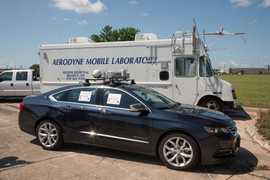Michigan-Ontario Ozone Source Experiment
Atmospheric Composition
- 1
- view all deployment datesDeployment
2021-05-17 2021-12-15 - 4
- Platforms
- 2
- Data Products
The Campaign
The Michigan-Ontario Ozone Source Experiment (MOOSE) was a multi-organization campaign that studied the emission sources of ozone and its precursors. MOOSE included a single deployment over Michigan and Ontario during the summer and fall of 2021. NASA’s Gulfstream-III (G-III) aircraft was equipped with the GeoCAPE Airborne Simulator (GCAS) and the Cloud Physics Lidar (CPL) to gather remotely sensed measurements of ozone, methane, and other pollutants. These measurements were complemented by data from mobile laboratories and field sites fitted with meteorological and chemical sensors. MOOSE was a collaborative effort among NASA and several organizations, including the Environmental Protection Agency (EPA), Environment and Climate Change Canada (ECCC), and the Michigan Department of Environment, Great Lakes and Energy (EGLE).
GLAMOR, Great Lakes Meteorology and Ozone Recirculation, CHESS, Chemical Source Signatures, MERLIN, Methane Releases from Landfills and Gas Lines
N: 45.6°N
S: 35°N
W: 87.2°W
E: 70.1°W
Additional Notes
Repositories

Uncrewed Aerial Vehicle

Vehicle

Field Site

Gulfstream III
Events
Filter data products from this campaign by specific platforms, instruments, or formats.